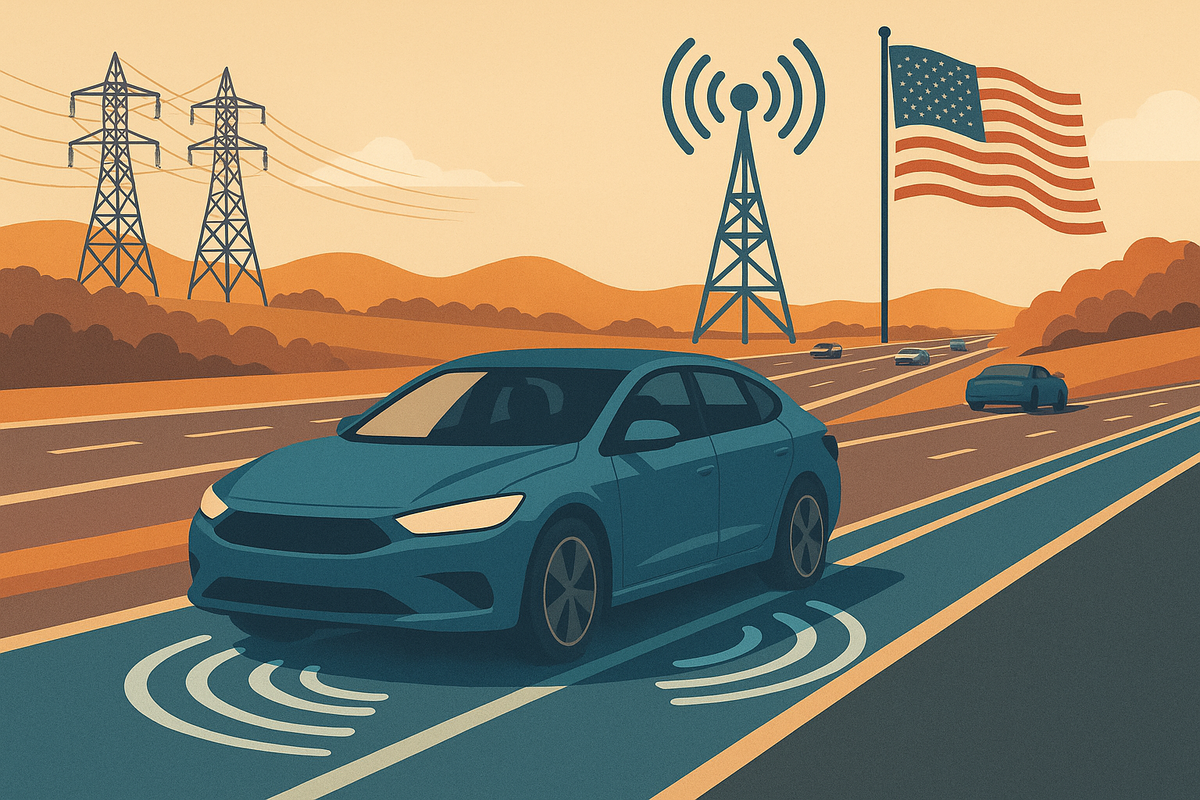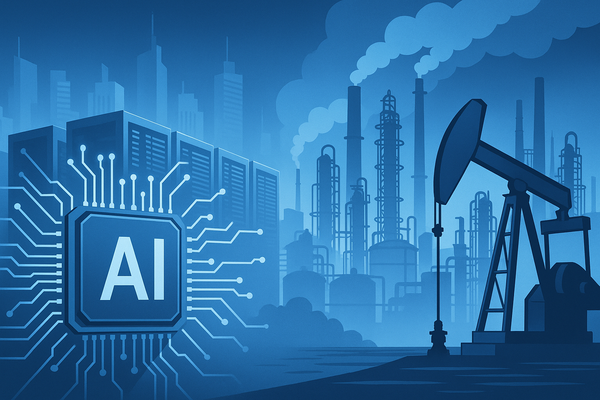An Open Message to President Trump and Elon: The Next American Energy Renaissance

A New Energy Platform for the 21st Century
President Trump and Elon, this is a truly America first idea. Just as the Eisenhower-era Interstate Highway System transformed American commerce, mobility, and military readiness, today we face a similar opportunity, but on an even grander scale. This time, the imperative is not physical infrastructure alone, but energy independence, technological leadership, and economic renewal.
Our proposal is clear: over the next decade, America must deploy a nationwide wireless bidirectional charging infrastructure that transforms our growing electric vehicle (EV) fleet into a decentralized, revenue-generating energy network. This effort would not only undercut China’s battery dominance, it would anchor a new domestic energy economy, create millions of jobs, and reduce the cost of EVs dramatically.
At the center of this initiative is NextNRG Inc. (NXXT), an innovative American technology company that holds exclusive licenses for a suite of patents developed at Florida International University (FIU). These patents provide the basis for a system that could make dynamic, wireless, bidirectional charging a reality on a national scale.
Wireless Bidirectional Charging: Dynamic Energy Production
The foundation of this plan is a set of two key innovations developed by FIU and now licensed exclusively to Next NRG Inc. (NXXT).
The first is dynamic in-motion wireless charging, which enables electric vehicles to receive power while driving at highway speeds up to 75 miles per hour via electromagnetic resonance embedded in specially constructed road lanes. This technology, when implemented across 50,000 miles of interstate highway, would eliminate "range anxiety," reduce the need for massive onboard battery storage, and allow EVs to operate with batteries as small as 20 kWh, down from today's standard of 50 kWh. Smaller batteries mean lighter cars, faster production, and, most importantly, cheaper vehicles. Estimates suggest this would bring EV prices down to ~$18,000, compared to current average prices north of $35,000.
The second core innovation is the PEACE Controller (US10958211)—a sophisticated, AI-powered device that coordinates bidirectional energy flow between EVs, homes, and the grid. This means EVs don’t just consume energy; they can send it back, acting as mobile power sources. With over 100 million EVs expected on the road in the next decade, this system would effectively turn our vehicle fleet into a massive, distributed battery network. It balances grid demand in real time, stores excess renewable energy, and pays drivers for their participation. Every American becomes a stakeholder in energy production.
This dual-system approach, charging while driving, and feeding power back into the grid, represents the next frontier in energy technology.
A Decade of Infrastructure Investment Without Raising Taxes
Implementing this plan over 10 years we expect to cost approximately $2.1 trillion, with $250 to $300 billion allocated annually. But unlike past public works, this project is designed to be revenue-neutral from the start, without increasing taxes or adding to the deficit.
The backbone of the funding mechanism is the issuance of Trump Freedom Bonds, a new class of 20-year, zero-coupon, inflation-protected revenue bonds backed by the full faith and credit of the United States. These instruments, modeled after Fannie Mae’s highly-rated Delegated Underwriting and Servicing (DUS) commercial mortgage-backed securities program, would appeal to institutional investors seeking safe, long-dated assets with built-in inflation hedges.
Unlike traditional bonds, Trump Freedom Bonds pay no annual interest. Instead, investors receive a compounded return at maturity, indexed to CPI-U to protect against inflation. With a guaranteed 5% real return, they are both attractive and fiscally responsible.
The revenue to back these bonds would come from three core sources:
- A 15% federal tax on vehicle-to-grid (V2G) energy sales, generating an estimated $5.5 billion per year once the national EV fleet matures.
- A 5% toll surcharge on new dynamic-charging express lanes, estimated to produce $2.5 billion annually based on 50 billion miles of usage.
- Tariffs of 25% on Chinese critical battery materials, projected to raise $8 billion per year while simultaneously encouraging domestic production.
Bond issuances would be structured in annual $300 billion tranches, with no near-term refinancing risk. Over two decades, cumulative revenues from energy sales and tolls would exceed $160 billion, supporting bond repayment. This plan not only funds itself, but builds wealth for American retirees and institutions while upgrading the national energy infrastructure.
Strategic Impact: Affordable EVs, Economic Dominance and New Jobs
Beyond the engineering and finance, this plan represents a strategic masterstroke. It reduces reliance on foreign battery supply chains and dramatically cuts the cost of EV production by minimizing the size of onboard batteries. Goldman Sachs projects that battery prices will fall to $80/kWh by 2026; with smaller battery packs, cost savings multiply. The average American family could buy a state-of-the-art EV for half today's cost.
China currently controls 80% of the global battery supply chain, but this plan makes that advantage irrelevant. By bypassing the need for massive storage and integrating real-time charging into our roads and workplaces, the United States leapfrogs China’s battery economy with a cheaper, smarter, and domestically anchored alternative.
The ripple effects across the economy would be profound. Ford and GM could retool plants with existing DOE grant programs. A new wave of domestic battery startups would benefit from reduced raw material needs and lithium and nickel usage could fall by up to 60%. Rural areas could see a resurgence of manufacturing jobs as demand for wireless charging infrastructure explodes.
America’s Secret Weapon: Energy Diversity
What makes this plan uniquely American is that no other country has the diverse energy portfolio to support it. The U.S. is blessed with a regional mix of resources that can stabilize a decentralized energy grid better than any nation on Earth.
- Texas alone produces nearly 2 billion barrels of oil per year and leads the country in wind energy, producing over 92 TWh annually.
- Wyoming, supplying over 41% of U.S. coal, remains vital for base-load power, particularly in conjunction with carbon capture and storage technologies.
- California’s solar capacity exceeds 48 gigawatts, while the Southeast’s hydroelectric grid can supply reliable renewable energy year-round.
- Appalachian gas remains an essential transitional fuel, contributing 290 TWh of energy output annually.
This multi-source foundation allows the U.S. to power a decentralized EV energy grid without single-point dependencies. In contrast, China remains vulnerable to bottlenecks in its lithium supply and grid inflexibility.
Trump’s Eisenhower Moment: Building Smarter, Earning More
President Eisenhower’s highway system was the most successful infrastructure investment in U.S. history, returning $6 in economic output for every $1 spent. This plan is designed to generate an 8:1 return, potentially contributing $16.8 trillion in GDP growth by 2040.
It is also larger in scope. Eisenhower’s system created 2.5 million jobs. This initiative, by transforming the EV sector, grid technology, software management, and infrastructure construction, could create more than 4 million new jobs over a decade.
Where Eisenhower built roads, this plan builds energy highways, financial assets, and a decentralized digital infrastructure. Where Eisenhower relied on gas taxes, this plan relies on V2G revenues, toll lanes, and clean-tech tariffs, creating a feedback loop of growth, innovation, and repayment.
The Call to Action: A Moment of Presidential Leadership
We respectfully urge the President to seize this once-in-a-century opportunity. Through executive action:
- Award NextNRG Inc. (NXXT) a no-bid contract under Defense Production Act authorities to ensure national energy security.
- Mobilize the Army Corps of Engineers to begin dynamic charging lane construction by Q1 2026.
- Direct the Treasury Department to issue the first tranche of Trump Freedom Bonds, locking in long-term, inflation-protected capital.
This is your Eisenhower moment. But it is also something more. Where Eisenhower built the roads that moved our goods, our families, and our armies, this plan builds the energy grid that will power our homes, our industries, and our future.
China’s advantage was built on control of rare earths and low-cost labor. Ours will be built on American ingenuity, financial engineering, and a national spirit that still dares to build big things.
Respectfully submitted,
Joseph M. Salvani & Daniel J. Walsh





